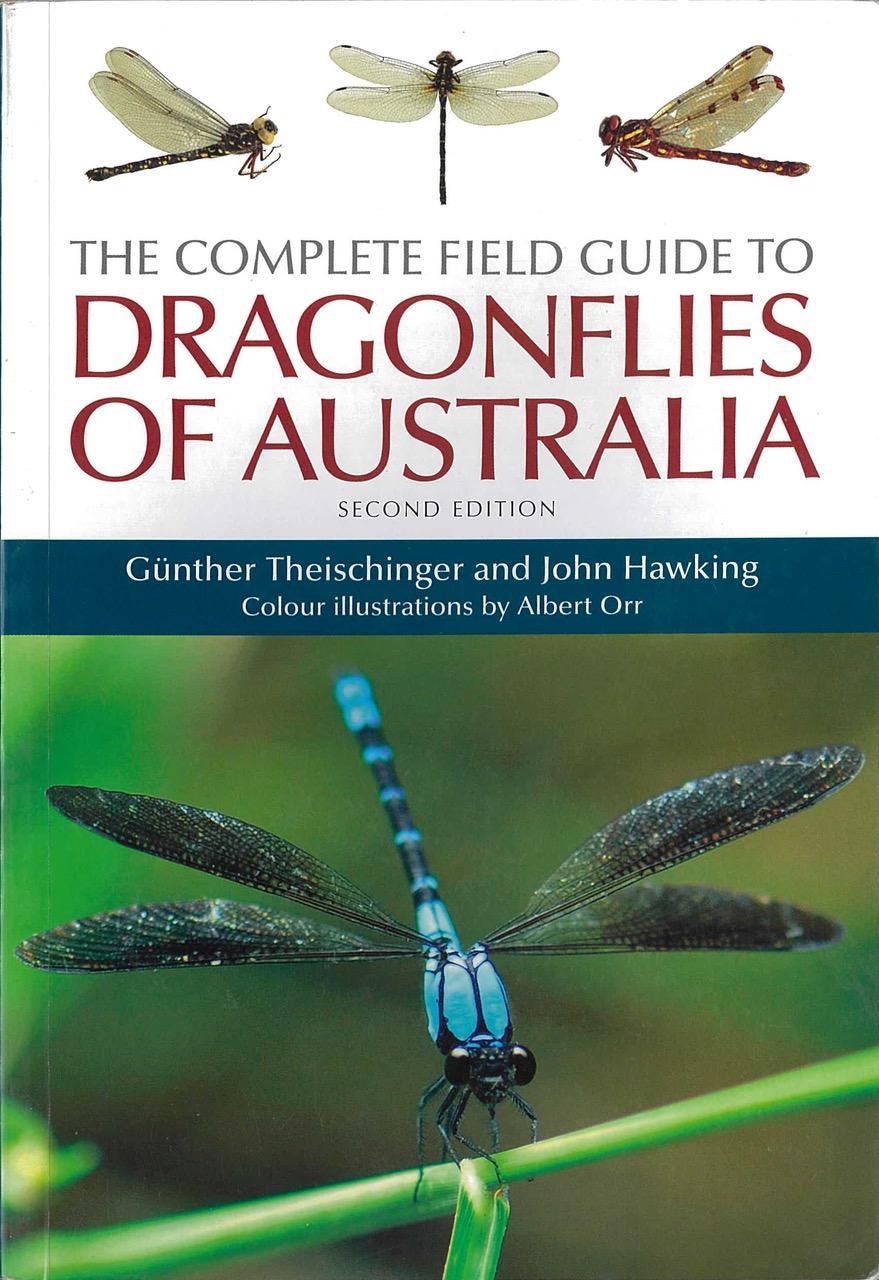Günther Theischinger, John Hawking & Albert Orr
CSIRO Publishing
2021
ISBN: 9781486313747
Reviewed by Chris Burwell
The first edition of this landmark guide to Australia’s dragonfly and damselfly fauna was published 15 years ago.That publication stimulated considerable interest in the Australian fauna of these charismatic and increasingly popular insects, as will this new edition. This is the only guide that treats all of Australia’s dragonflies and damselflies. What also sets this guide apart, is that it covers both adults and larvae, at least where the latter are known.
The ‘Introduction’ briefly covers general biology, ecology and dragonfly and damselfly habitats,significant elements of the Australian odonate fauna and species of conservation concern.The next section, the ‘Species guide’ begins with broad information that will aid the reader in identifying species and interpreting the species accounts that follow. The species accounts comprise the bulk of the guide and include text on habitat and diagnostic characters to distinguish the adult and larval stages which are usually illustrated by black and white line drawings of anatomical features. Each account also includes a distribution map, one or sometimes two images of the adults, and occasionally an image of the larva.
Species are arranged within taxonomic families, there are ten in the new edition. The family classification has changed considerably between the first and second editions,reflecting recent studies on the phylogeny of the Odonata.The classification of some dragonflies, particularly the relationships of several Australian genera, is still unresolved. Consequently,several groups recognised as families in the first edition are treated as unplaced groups within the superfamily Libelluloidea in this edition. Within each family, species are grouped according to genus, with introductory notes on each genus with two or more species. The genera are not arranged alphabetically which can make tracking down particular species difficult in the larger families.
Towards the end of the book there is an excellent illustrated glossary to the morphological terms used in the species accounts and in a series of technical identification keys to the families and genera of both adults and larvae that follow the glossary.
Much of the content of the new edition is almost identical to that of the first edition, but with the species accounts rearranged to reflect the updated family-level classification. However, the new edition includes significant changes and new information. Most importantly, several extra species are featured. Some are species newly recorded from Australia such as the Giant Knight and the Decorated Grasshawk from islands in the Torres Strait, a stone’s throw from New Guinea. Six are new Australian species described after 2006, one of which, the Artesian Pygmyfly, was named as recently as 2020 and was inserted into the new edition at the last minute.
The photography in the new edition is vastly improved. For many species, scans of dead specimens have been replaced with photographs of living individuals, and for others, the quality of the live shots has been upgraded. These improvements could have been even more extensive; for example, relatively poor photos of two of Australia’s most common species the Scarlet Percher and the Wandering Percher, have been reused in the new edition. Many species are still illustrated with scans of dead specimens, but in some cases photographs of living specimens just aren’t available,something of a challenge for the burgeoning amateur odontophiles in Australia. Another wonderful addition to the new edition is 12 pages of exquisitely painted colour illustrations of adults by Albert Orr.
The distribution maps of more than fifty species have been updated; the ranges of most have expanded, and for a small number, distribution errors have been corrected. These maps are based on 13 large geographical areas which are either filled or blank in each species’ map. This broad-brush approach can be misleading. For example, many rainforest species in eastern Queensland appear much more widely distributed than the reality.
Like the first edition, this guide is an invaluable resource for those interested in Australia’s dragonfly and damselfly fauna. It condenses a vast wealth of information on both the adults and larvae of all the known species into a handy-sized guide that can be easily carried into the field. It will prove especially useful for those who collect or work with specimens in the field and the lab. I would also recommend it for those focussed on capturing species through the lens of a camera but with the caveat that it is not really a photographic guide. The males and females of many dragonfly and damselfly species differ dramatically in colour and many species also change dramatically in appearance as they age. Many of these variations are not captured in this book, but producing a comprehensive guide to Australian species that did so would be mammoth task indeed.


